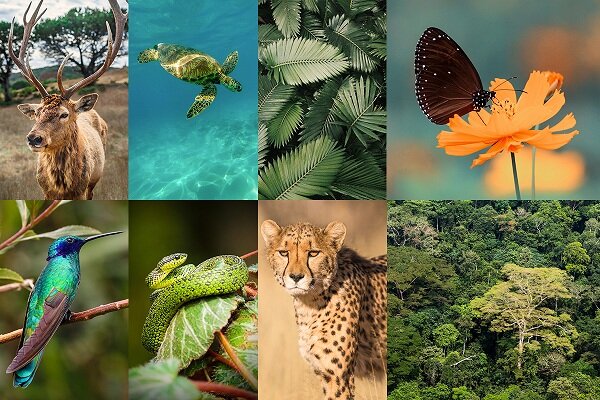Iran among world’s richest in biodiversity, genetics

TEHRAN – There are 11 types of ecosystems in the world, 9 of which are identified in Iran. Moreover, out of 42 types of wetlands, 41 types exist in the country. Therefore, Iran is one of the 20 countries rich in biodiversity and genetics.
Biological and genetic diversity in our country has caused many plants and animals to be native to Iran, currently, there are 2,100 endemic plant species in Iran, Eskandar Zand, the national authority for the Convention on Biological Diversity said.
Five ecoregions, rich biodiversity
Each region is defined by its characteristics that play a significant role in a land's biodiversity and richness, based on which, Iran shares five ecological zones with specific flora from the lowest to the highest parts, namely, Caspian, Iran-Turani, Arasbaran, Zagros, and Persian Gulf-Omani ecological zones.
The great difference between the two latitudes of the north and south of the country and the existence of different plains, altitudes, and climates have given a very diverse view to the vast land so that a variety of vegetation and plant species are grown across it.
The Hyrcanian ecological zone covers the green belt, the southern margin of the Caspian Sea, and the northern profile of the Alborz mountain range. The forested areas of the region stretch to 2.4 million hectares covering Astara in Gilan province to Glidaghi in Golestan province.
The area of forests in the Iran-Turani ecological region, which covers most of the central plateau of Iran, is 4,666,941 hectares. Based on topographic and altitude conditions, this region is divided into two mountainous regions with a cold climate and a desert with a hot and dry climate.
Arasbaran forests, which are among the semi-humid forests of the country, are located in the province of East Azarbaijan and northwest of Ardebil province, which covers 174,838 hectares.
Some sources date the Zagros oak forests to 5,500 years. The creation and expansion of these forests are due to rainfall raised by the Mediterranean system and the Black Sea, which extends from the Sardasht area of West Azarbaijan to Firoozabad city of Fars province covering an area of 5,440,494 hectares.
The forests of the Persian Gulf-Omani ecological region include part of the southwest and all southern coasts, covering 2,039,963 hectares. Due to ecological differences, the main vegetation is divided into two territories of the Persian Gulf and the Sea of Oman.
Biodiversity in danger
Unfortunately, the protection of forests, pastures, and agricultural lands in our country has not been appropriate in recent years. Improper exploitation, land-use change, and land degradation are the main causes of deforestation and consequently biodiversity, Zand regretted.
According to the statistics, there are about 2 million hectares of forest lands and 15.7 million hectares of forests in Iran.
Comparing this statistic with the data of 2005 shows that during the past 16 years, the level of forests in Iran has not changed much, but the quality of forests has been damaged; So that about 1.6 million hectares of semi-dense forests of Iran (with a density of 25 to 50 percent) has been reduced and in contrast to 1.9 million hectares have been added to forest lands (with a density of 1 to 5 percent), he explained.
As a result, the quality of Iranian forests has dropped sharply, except for dense forests, which cover about 12 percent of the whole forests and are relatively inaccessible, the rest are severely damaged, he lamented.
FB/MG
